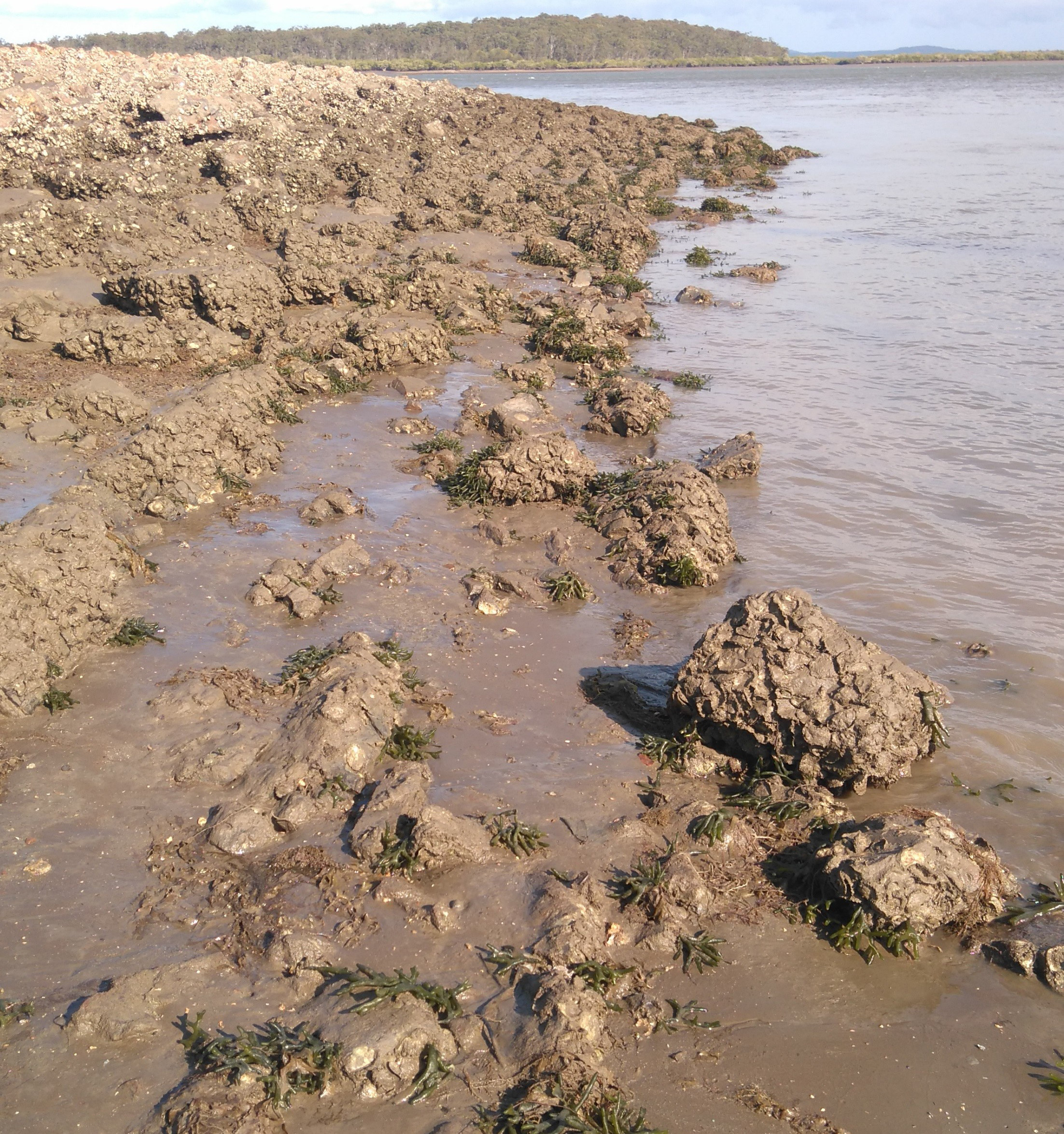|
|
Intertidal algaeShort descriptionIntertidal algal community growing on any type of substrate, but typically consolidated. Disclaimer: Ecosystem type descriptions are based on biophysical attributes identified in Central Queensland through expert advice and supported by scientific literature. Not all ecosystem types are mapped based on current inventory, and many of the ecosystems described here may also occur in other parts of Queensland.
Classification categoriesSelect from the links below to view related ecosystem type categories Long descriptionIntertidal algal community growing on any type of substrate (i.e. unassigned), but typically consolidated substrates of carbonate platform, rock base, pavement or boulders, intermediate coffee rock, or unconsolidated gravel. Communities are typically dominated by erect calcareous (e.g. Halmeda spp.), turf algae (e.g. Chlorodesmis sp.) and/or other macroalgae (e.g. genera Lobophora, Asparagopsis, Sargassum, Padina, Ulva). May occur as a subdominant community of seagrass meadows, coral reefs or reefal gardens, or on consolidated or intermediate substrates. Excludes microphytobenthos algae, that is, encrusting growth forms such as crustose coralline algae (CCA) and/or benthic microalgae (BMA). Algae can be microscopic, filamentous, turf or encrusting, or macroalgae. Macroalgae (seaweeds) are marine plants that photosynthesise in all their cells, and have a simple holdfast to anchor onto substrates, such as rocks, shells or gravel. Rather than having leaves like seagrasses, macroalgae have a blade-like growth form which is divided into segments. Special valuesImportant primary producer for intertidal and subtidal communities. Where algae are tall and canopy forming they provide a refuge for fish, including nursery value for juveniles[3]. In general, all algal ecosystems need light and photosynthesise, taking up nutrients, such as nitrogen and phosphorous, and their presence can indicate high levels of these. These are key nutrients identified as impacting on receiving waters, addressed in water quality plans for the Great Barrier Reef, including the Wetlands in the great Barrier Reef Catchments Management Strategy 2016-21: ‘Wetlands can play an important role in improving water quality by trapping and transforming pollutants such as nutrients, sediments and pesticides’. Algae are colonisers of bare substrates, including coral reefs post-bleaching or other mortality events. Typically, the succession is bare space to microalgal film, to filamentous turf algae and CCA, to erect macrophyte and erect calcareous algae[1]. Understanding the balance between algal growth and live coral cover on coral reefs is important for the management of coral reefs. Intertidal macroalgae can also overgrow seagrasses in high nutrients waters. Certain algae can cause nuisance under specific conditions. The cyanobacteria or blue-green algae are encrusting and can form mats or be filamentous, and are ephemeral in their growth and recurrence. Diagnostic attributesInundation 'Intertidal – Lower low', 'Intertidal – Mid low', 'Intertidal – Upper low', 'Intertidal – Low undifferentiated', 'Intertidal – Lower medium', 'Intertidal – Upper-medium', 'Intertidal – Medium undifferentiated', 'Intertidal – High', 'Intertidal – Undifferentiated', 'Intertidal – High undifferentiated' Structural macrobiota 'Algae – erect calcareous', 'Algae – erect macrophyte', 'Algae – turf', 'Algae – other or unspecified' QualifiersPeriod and Trend qualifiers are relevant (Intermittent: seasonal/ephemeral). The Cover qualifier is relevant to monitoring percentage cover of algae, especially on coral reefs. ‘Phase shift’ is a term used to describe the higher cover of algae in proportion to live coral cover on coral reefs[2]. DistributionAlgae may be found throughout Queensland intertidal shorelines on both consolidated and unconsolidated substrates, where it is seasonally intermittent. For example, Lyngbya spp. is a harmful blue-green algae that can occur intertidally and subtidally as algal blooms, irritating skin and breathing and is known from Moreton Bay. Hincksia sordida is a non‐toxic filamentous brown algae known to periodically occur from Fraser Island and Hervey Bay south to the Sunshine Coast, growing on areas such as seagrass beds fluctuating in their growth in response to nitrogen availability[4]. The following relates to distribution of this ecosystem type within the Central Queensland mapping area:
CommentsOther relevant attributes include Consolidation and Sediment texture as algae need an attachment point however they can also attach to other Structural macrobiota. Additional Information
References
Last updated: 18 July 2019 This page should be cited as: Department of Environment, Science and Innovation, Queensland (2019) Intertidal algae, WetlandInfo website, accessed 25 June 2024. Available at: https://wetlandinfo.des.qld.gov.au/wetlands/ecology/aquatic-ecosystems-natural/estuarine-marine/descriptions/16/ |

 — Department of Environment, Science and Innovation
— Department of Environment, Science and Innovation


